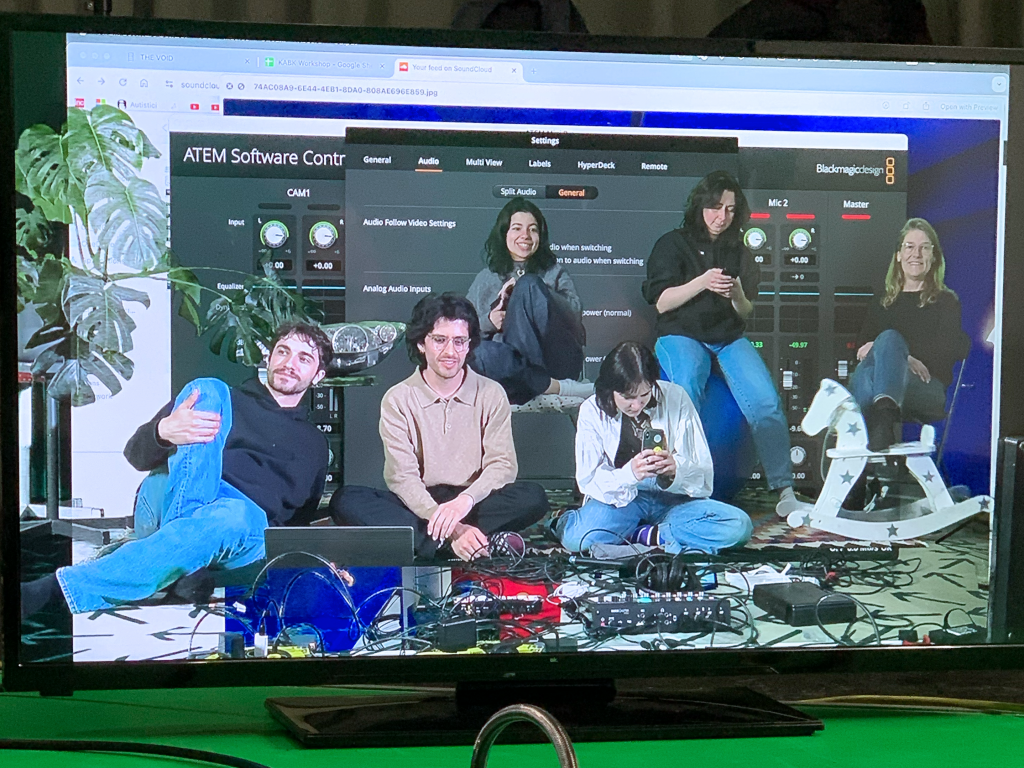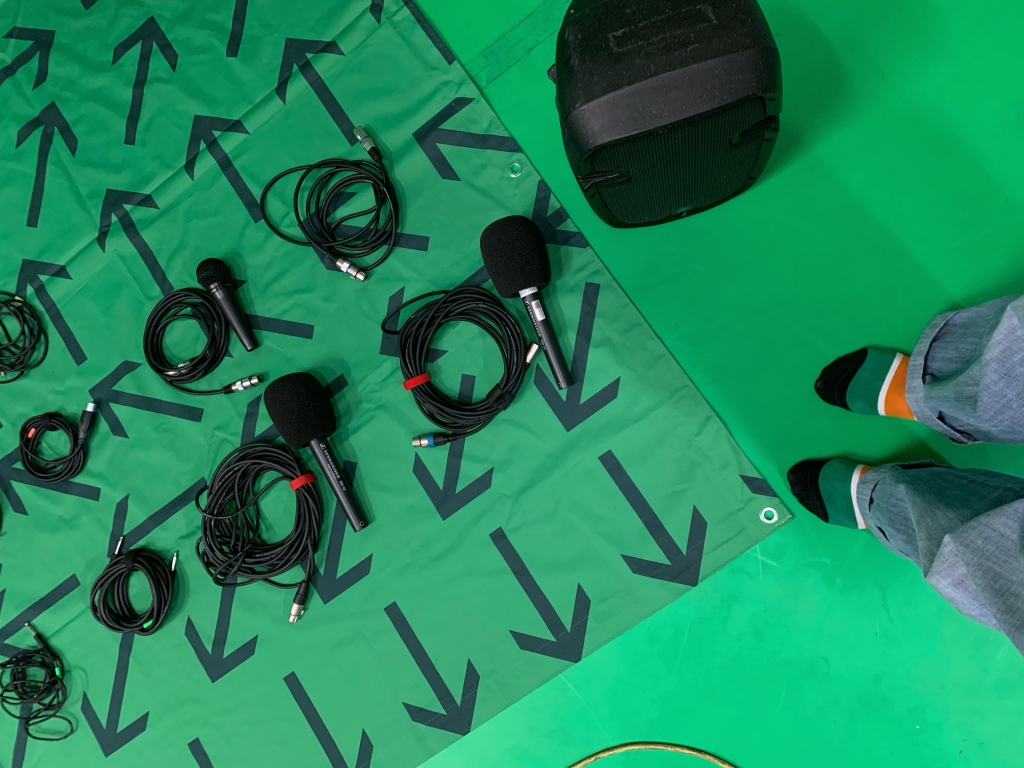
On the 18th of April, we were invited to hold a workshop for the Photography & Society Master’s students at KABK, in the Hague. Being the first workshop I did as part of THE VOID team (a very ominous way of describing oneself, as a student pointed out later), I was excited to be there. For those who are unfamiliar with our activities, this is a brief description:
THE VOID is a research project on tactical video and an audiovisual publishing venue for practice-based research. Hybridity and collectivity are essential for the way THE VOID functions: we propose to reframe modes of media production into collective acts of broadcasting. By setting up hybrid pop-up streaming studios, we merge production, distribution and archiving into a single event. To practice audio-visual criticality, our streams display the on-site social and technical infrastructure with all its glitches. We see our hybrid pop-up studios as tactical video: an occasion to pollute online spaces with offline encounters and, vice versa, to rearrange how we physically exist together to create new ways of inhabiting a stagnating online media landscape.
We often struggle to define our practice, especially when in front of us there’s someone who doesn’t speak streaming, video editing, and cables. That’s why having students from a quite different backgrounds looked so promising. During the preliminary session, students introduced themselves and their research — ranging from environmental sound to social practices and investigating the spectrum. Transitioning to the green screen studio, where equipment like cables and mixers were laid at the ready, the students immersed themselves into the setup, gradually assimilating the technical objects as if they were digital extensions.
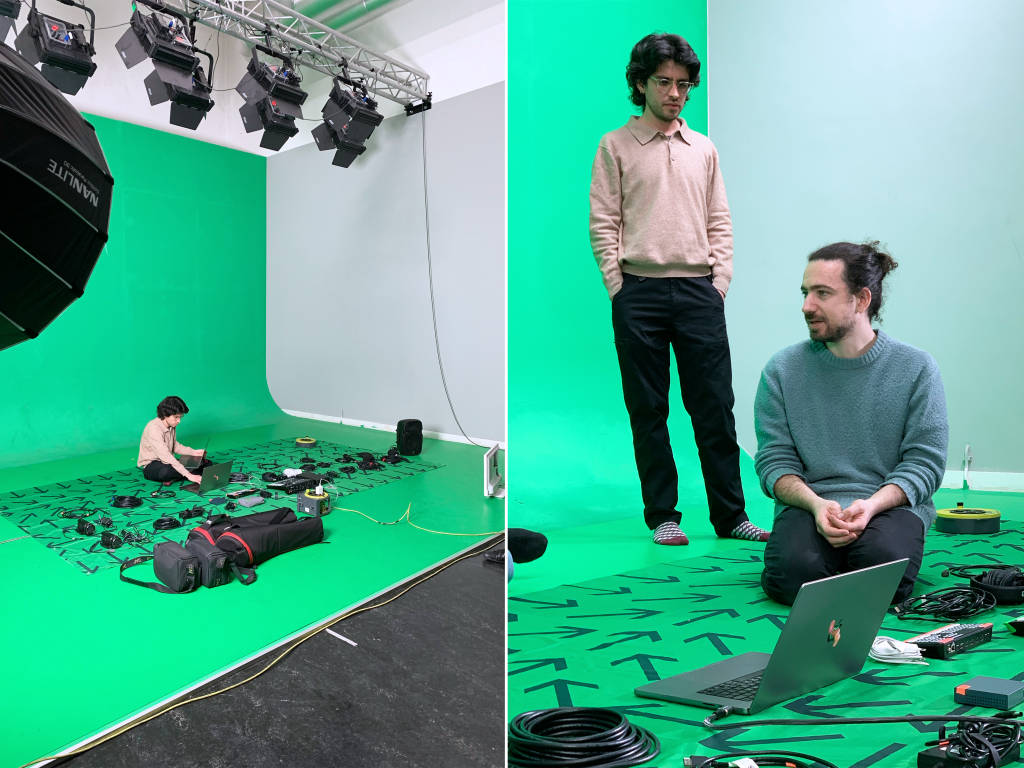
Before the lunch break, Tommaso outlined the task of curating the afternoon program. He started by depicting the project’s diagram — an embodiment of both technical setup and its abstract conceptualization — and the students initially appeared a bit intimidated by this chore. But as they delved into cable connections, a transformation occurred. It became visible that beyond mastering technical intricacies, the workshop empowered them to self-organize and envision future events. At that moment I started to understand the unique situation we were experiencing by showing them how to use those tools. We seized the chance to witness fresh perspectives on hardware interaction and emerging curatorial practices.
The workshop’s stage design was the perfect opportunity for the students to become our guides through the intricate maze of the KABK building. So, Jordi and I received a swift tour of various departments from Fabio and Sara, who seamlessly integrated into the role of Cicerone. The peculiarity of the structure, where each department – Architecture, Documentary, Design, Fashion – was on a different level but naturally intersecting with the others, gave us a brief glimpse of what studying there must have been. We took a couple of pillows from Design, together with a car’s headlight, a carpet from the office next to the green screen studio, some plants, a Pilates ball, and a pink rocking horse from a big collection of girlie-modified props. Then we headed back to the studio, where Tommaso and Marna were testing the sound connection.
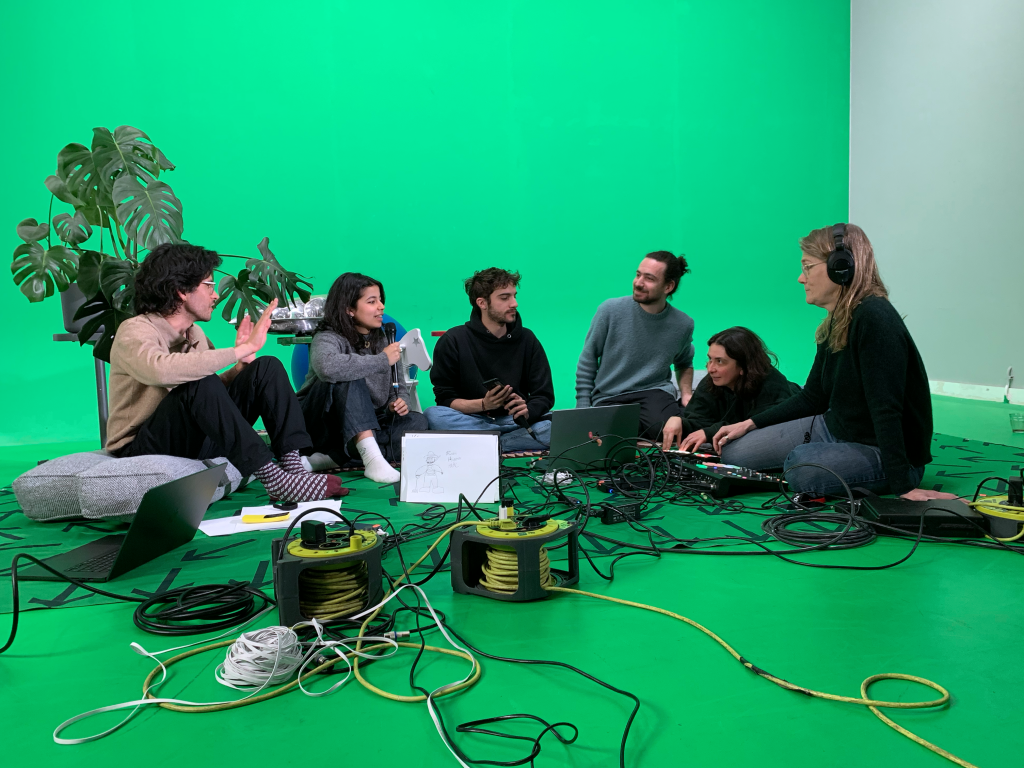
As Tommaso inputted into the beginning, Sara took the lead regarding the diagram creation. Alina was testing the mixer, while Marna was checking the output in the headphones. Fabio kept busy setting up the second camera. Now that the objects were carefully assembled in the space, creating a background for the livestream, the question of the topic emerged. Some of them had recently researched the Doggerland, a landmass that connected Great Britain to mainland Europe during the last Ice Age, now submerged under the North Sea. The students proceeded to curate an interview about fossil hunters, dolphins, and seaside inhabitants. The team worked together smoothly, each playing their part in bringing the project to life.
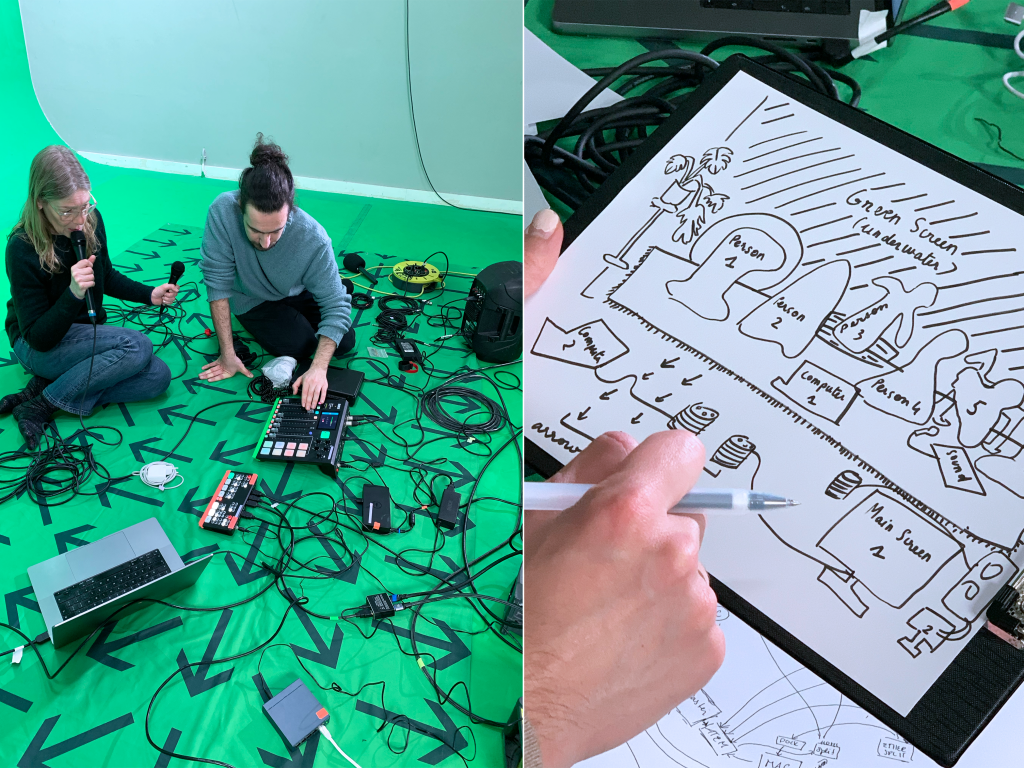
The students engaged in various structural experiments and innovations, including moving the camera to mimic the sea’s motion, using free archival sounds to create dolphin voices, and incorporating spontaneously created background graphics. The atmosphere felt akin to a DIY theater production, reminiscent of a rainy summer day spent crafting a play with household items, enjoyed by a family audience of parents and pets. The experience was relaxed, without concern for the outcome, still with the excitement of a debut stand-up comedy show. It evoked a sweet and nostalgic feeling. Being there was a reminder that a new group doesn’t just mean new voices, but a completely innovative and unexpected use of THE VOID’s usual setup.
